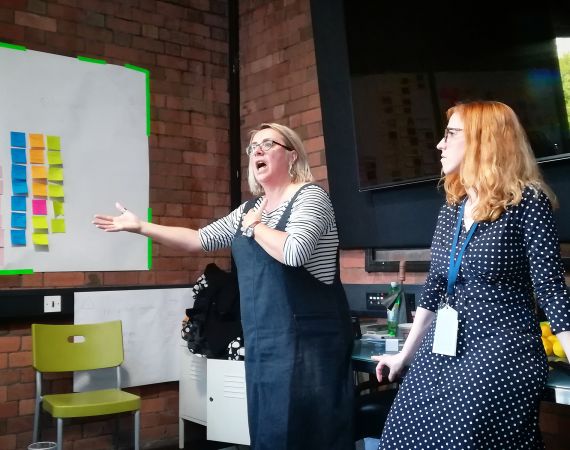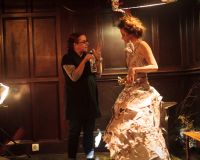Lunchtime talk write-up
Posted on Thu 12 Oct 2017
In Conversation with Sharon Clark
Studio Producer Verity McIntosh and Sharon Clark Creative Director of Raucous discussed the making of immersive theatre and narrative in ‘found space’. Sharon’s latest show Ice Road utilizes the old Jacob Wells swimming baths, using elements of projection mapping, music and digital technology.

Posted by
Speaker

Sharon Clark
Sharon is the Creative Director of Raucous, a collaboration of theatre practitioners, writers, filmmakers, composers and creative technologists.Studio Producer Verity McIntosh and Sharon Clark Creative Director of Raucous discussed the making of immersive theatre and narrative in ‘found space’. Sharon’s latest show Ice Road utilizes the old Jacob Wells swimming baths, using elements of projection mapping, music and digital technology. We found out what creative challenges she and her team have been facing and how they have been approaching working with a network of collaborators and the audience.
Five Things I Learned
1. The talk kicked-off with the trailer for Ice Road, set in 1942 Leningrad (now known as St. Petersburg) during the ‘winter of starvation’. Sharon found it fascinating that during a period of no food and wide spread starvation, that the arts flourished, the Philharmonic Orchestra continued to meet and play and the music helped to keep people going. Existence was so hard that many died in the theatres where they played. Sharon wanted to share the story of the children left behind by the siege.
2. Sharon travelled to St. Petersburg with sound designer and studio resident Tanuja Amarasuriya and found survivors to talk to as well as visiting the actual theatres that were open during the siege. Sharon recounted the warm response she received from the Russian locals and learned that many of them were still upset at America and Europe for forgetting their sacrifice during WW2. Sharon’s curiosity and desire to retell their history earned her a lot of respect and openness from the people she met.
3. Raucous makes theatre in disused spaces, their earlier show The Stick House used the tunnels under Bristol Temple Meads train station. However they faced unusual issues, including rats in the tunnels that would gnaw through the electric cables and projector bulbs blowing due to dampness in the space. Difficulties Sharon faced with Ice Road was that she had a really limited window between the Arts Council funding coming in and the Baths building being closed down. Given the tight timeline they took the decision to have only 3 preview shows. Sharon would normally plan around 10 to see the performance in the space and adjust the play accordingly as it’s such an unusual venue.
4. Before The Stick House Sharon hadn’t incorporated technology into her writing and there were so many questions that she thought about. How did she want the audience to interact with the tech, or should there be any interaction at all? For Ice Road, one of Sharon’s initial idea was to have a real apple to give to each person that would light up. The team made it work from a technical standpoint, but ultimately decided that it wasn’t the best fit for the narrative and chose to move on. As a rule of thumb the team made sure that any technology included serviced the story.
5. Sharon developed the idea of using ‘Totems’ to affect the audience members by using tech in an unintimidating way. In The Stick House the totem was a small doll that was given to every audience member as they came in that would light up and vibrate to emphasise critical points in the narrative. For Ice Road each person received a small radio which crackles into life at various points in the show, revealing new pieces of information and allowing everyone to be a part of an epic orchestral crescendo. Sharon believes that theatre is too cautious of technology, seeing it as expensive and fallible. However for Sharon it’s not the tech that’s the most expensive part, it’s the talented people who make it work.
In future Raucous plan to create large scale shows like The Stick House and Ice Road every two years with smaller shows in between. If you haven’t seen Ice Road then don’t miss out, you can book tickets here.
